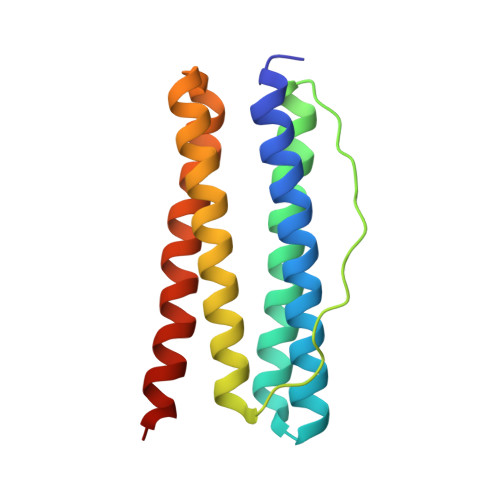Directed Self-Assembly of Dimeric Building Blocks into Networklike Protein Origami to Construct Hydrogels.
Liu, Y., Chen, X., Yin, S., Chang, X., Lv, C., Zang, J., Leng, X., Zhang, T., Zhao, G.(2022) ACS Nano 16: 19472-19481
- PubMed: 36315654
- DOI: https://doi.org/10.1021/acsnano.2c09391
- Primary Citation of Related Structures:
7X9X, 7XA2, 7XA4 - PubMed Abstract:
Engineering proteins to construct self-assemblies is of crucial significance not only for understanding the sophisticated living systems but also for fabricating advanced materials with unexplored functions. However, due to the inherent chemical heterogeneity and structural complexity of the protein surface, designing complex protein assemblies in an anisotropic fashion remains challenging. Here, we describe a self-assembly approach to fabricating protein origami with a networklike structure by designing dual noncovalent interactions on the different positions of a single protein building block. With dimeric proteins as building blocks, 1D protein filaments were constructed by the designed metal coordination at key protein interfaces. Subsequently, the network superstructures were created by the cross-linking of the 1D protein filaments at branch point linkages through the second designed π-π stacking interactions. Notably, upon increasing the protein concentration, the formed protein networks convert into hydrogels with reversible, injectable, and self-healing properties, which have the ability to promote bone regeneration. This strategy could be used to fabricate other protein-based materials with unexplored functions.
- College of Food Science & Nutritional Engineering, Beijing Key Laboratory of Functional Food from Plant Resources, China Agricultural University, Beijing 100083, People's Republic of China.
Organizational Affiliation:


















